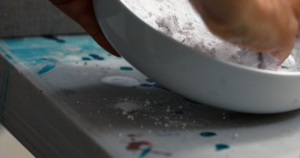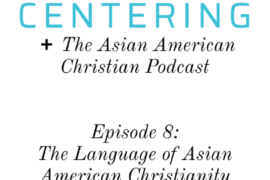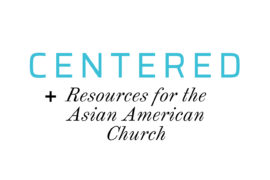 For some, reflecting on the words “creativity, beauty, and faith” can easily bring up a solely white, western-centric theology based on Renaissance-era paintings, stained glass art, and European-style cathedrals. But this would be far from true: every culture and ethnic group has a unique story to tell when connecting God with beauty and creativity.
For some, reflecting on the words “creativity, beauty, and faith” can easily bring up a solely white, western-centric theology based on Renaissance-era paintings, stained glass art, and European-style cathedrals. But this would be far from true: every culture and ethnic group has a unique story to tell when connecting God with beauty and creativity.
The Asian American story is no different, and we have a unique role to play as artists, creatives, makers, and entrepreneurs. Here are a few things that I consider, as a Chinese American Christian artist, when describing creativity, beauty, and faith:
- Community and creativity
The word artist, especially in Western art movements, often conjures the image of a singular genius. Leonardo DaVinci, Michelangelo, Pablo Picasso—all of these figures were seen as larger-than-life individuals, who could summon up the divine with a single paint-stroke. Their accomplishments were profound—but, ultimately, part of a different time period. Today, the notion of a singular solitary artist is outdated. With the birth of the internet, we are more connected than ever. With connection comes collaboration, and with collaboration the creative possibilities are endless.
The Asian American story is one of collaboration. Our heritage values being community-oriented, family-oriented, and communal. We are a culture of honor towards one another. Mixing these values with creativity is powerful. At Alabaster, the creation of our books is far from a singular act. It takes a team of people collaborating, communicating, and interacting with each other to make a product come to life. The creative life is one of collaboration.
- Silence, indirectness, creativity, and justice
Much has been discussed regarding the quietness, silence, and indirectness of Asian Americans. Often, these are raised in the direct context of being marginalized or invisible in society, and needing to “raise our voices” or “speak up” around topics of social justice. These are important critiques; Jesus was someone who advocated for the poor and the oppressed. We can do better at advocating for those on the margins—especially when we are not directly affected. That said, there is also something worth reclaiming about the value of silence and indirectness, and we should not lose these values in our quest for advocacy. In fact, we can use our silence and our indirectness to advocate. Art makes this possible.
Art is an indirect communication method. When we look at an art object, we are witnessing a stand-in for that which the artist cares for. An art object that is truly beautiful challenges the viewer to step outside of themselves, instead putting the object of beauty at the center of their experience. When this “object” is one that advocates for justice, it has profound impacts—and is often a necessary prerequisite to move someone towards real change in the world.
III. Creativity and going “in-between”
Artists are notoriously uncomfortable in homogenous settings, never quite “fitting in” anywhere, preferring to observe life at the edges of society. Artists are at home being between people groups, varying cultures, polarizing ideas, spiritual-traditions—reconciling, and connecting disparate things together.
The Asian American story is a story of the “in-between.” We are a culture of kids that said “thank you” at school and “xièxiè” at home. We ate spaghetti with chopsticks and our Thanksgiving turkey with white rice. The ability to connect and bring together is part of our identity. Jesus was someone who went “in-between”—the very notion that Jesus incarnated is about bringing worlds together.
Ultimately, the ability to go “in-between” is a form of empathy. Asian American creatives are uniquely ready to be empathy bearers, creating work that brings humans together and revealing shalom here on earth.
That is a beautiful thing.
Amen.



Comments are closed.